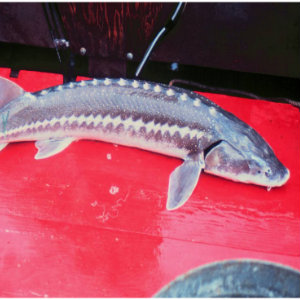White Sturgeon

Martin S. FiTzpatrick, Molly Webb, and Carl B. Schreck
Latin name: Acipenser transmontanus
Research on white sturgeon of the Columbia River basin found that fish contained many anthropogenic contaminants and that some reproductive impairment was present. These findings are important for recovery planning to stem population declines. In addition, other aspects of the work was useful for establishing recreational fishing regulations to protect the reproductive capacity of populations by determining the overly stressful aspects of fishing practices. Physiological indicators of stress indicated that lengthy time periods between hooking and landing were particularly stressful to brood fish.
Publications:
Feist, G.W., M.H. Webb, D.T. Gundersen, E.P. Foster, C.B. Schreck, A.G. Maule, and M.S. Fitzpatrick. 2005. Evidence of detrimental effects of environmental contaminants on growth and reproductive physiology of white sturgeon in impounded areas of the Columbia River. Environmental Health Perspectives 113:1675-1682.
Webb, M.A.H., G.W. Feist, M.S. Fitzpatrick, E.P. Foster, C.B. Schreck, M. Plumlee, C. Wong, and D.T. Gunderson. 2006. Mercury concentrations in gonad, liver, and muscle of white sturgeon, Acipenser transmontanus, in the lower Columbia River. Archives of Environmental Contamination and Toxicology 50:443-451.
